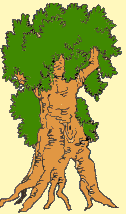Calotropis procera
Calotropis procera
 French: Sodome apple; Wolof: Faftan; Haoussa: tounfafia , Goun: Kpintoé
French: Sodome apple; Wolof: Faftan; Haoussa: tounfafia , Goun: Kpintoé
Description :
Latex shrub, with an irregular crown, 3 to 5m high, sometimes branchless up to 2m. The bark is thick, corky, cracked, gray to light beige, with a yellow slice. The latex is white. The twigs are finely pubescent and glaucous. The leaves are opposite, more or less succulent, sea-green above and gray-green below. The flower is white green and purple, 2 to 3cm in diameter, with 5 petals. The fruit is a large, swollen, ovoid follicle the size of a mango, green, soft, and filled with air. The flattened seed is surmounted at one end by a tuft of white bristles.
It is a Sahelian species that prefers sandy soils. Colonize wetlands on degraded soils, fields, and fallows. It is found in Africa, north, and south of the Sahara. In East Africa, India, Pakistan, Latin America, and the Caribbean. It is irregular, locally common,è, and gregarious.
Medicinal uses: generally used in small doses (cardiotoxic). All parts of the plant are poisonous, with the latex having a stronger action. The twigs promote digestion. The leaves are deworming and are used to treat filariasis and coughs. Latex is used to get rid of lice and ringworms. The roots have purgative, diuretic properties and are used as an anti-poison. The bark is a tonic, diaphoretic, aphrodisiac, and is also used to treat syphilis. The combination of twigs and leaves is used against whooping cough and tuberculosis.
Add a comment






















